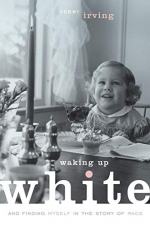
|
| Name: _________________________ | Period: ___________________ |
This test consists of 5 multiple choice questions, 5 short answer questions, and 10 short essay questions.
Multiple Choice Questions
1. Irving states in Chapter 5: Within the Walls, "If I could turn back time and rewrite the script for those years, my parents would be deft at sharing with me the realities of American history, especially" what?
(a) The history of slavery.
(b) The Civil War.
(c) Reconstruction.
(d) The civil rights movement.
2. Irving asserts that American culture and government have always embraced the idea of America as what object?
(a) A mosaic.
(b) A melting pot.
(c) A black hole.
(d) A city on a hill.
3. By what decade had "pale skin become a beauty ideal for white people, making its way into European art and literature" (57)?
(a) The 1860s.
(b) The 1790s.
(c) The 1920s.
(d) The 1720s.
4. Irving advocates for which narrative to become one among many telling the story of America's history?
(a) Qualitative.
(b) Dominant.
(c) Marginalized.
(d) Quantitative.
5. Which member of Irving's family is featured most prominently within the events of the memoir's first chapter?
(a) Her mother.
(b) Her brother.
(c) Her aunt.
(d) Her cousin.
Short Answer Questions
1. In Chapter 6: From Confusion to Shock, Irving describes moving to the city of Cambridge in which state after college?
2. Irving reveals in Chapter 4: Optimism that she was born in which year?
3. In Chapter 18: Color-Blind, Irving states that she decided early in life that racism was what sort of conversation topic?
4. The activity at the end of Chapter 17: My Good People asks the reader to give reasons why they never believed that they could take which action in relation to racism?
5. What is the topic of the activity presented at the end of Chapter 1: What Wasn't Said?
Short Essay Questions
1. In what way does Irving use repetition to underscore the importance of her message in Chapter 14: Zap!?
2. What solution does Irving offer for creating a more complete picture of American history?
3. What is the motivation for the dominant culture's stance regarding America as either a melting pot or a mosaic?
4. Discuss the impact of the philosophy of colorblindness as it relates to the fight for social justice.
5. Which movement within history does Irving wish her parents had discussed with her?
6. For what reason does Irving use an allusion to the television show I Love Lucy in Chapter 12: Icebergs?
7. What message does Irving send in Chapter 3: Race Versus Class about the distinction between those two elements of society?
8. What is the symbolism of the set of diplomas described in Chapter 16: Logos and Stereotypes?
9. How does Irving explain the difference between a mosaic and a melting pot?
10. How does Irving describe the connotations associated with the quality of whiteness in Chapter 9: White Superiority?
|
This section contains 954 words (approx. 4 pages at 300 words per page) |

|




